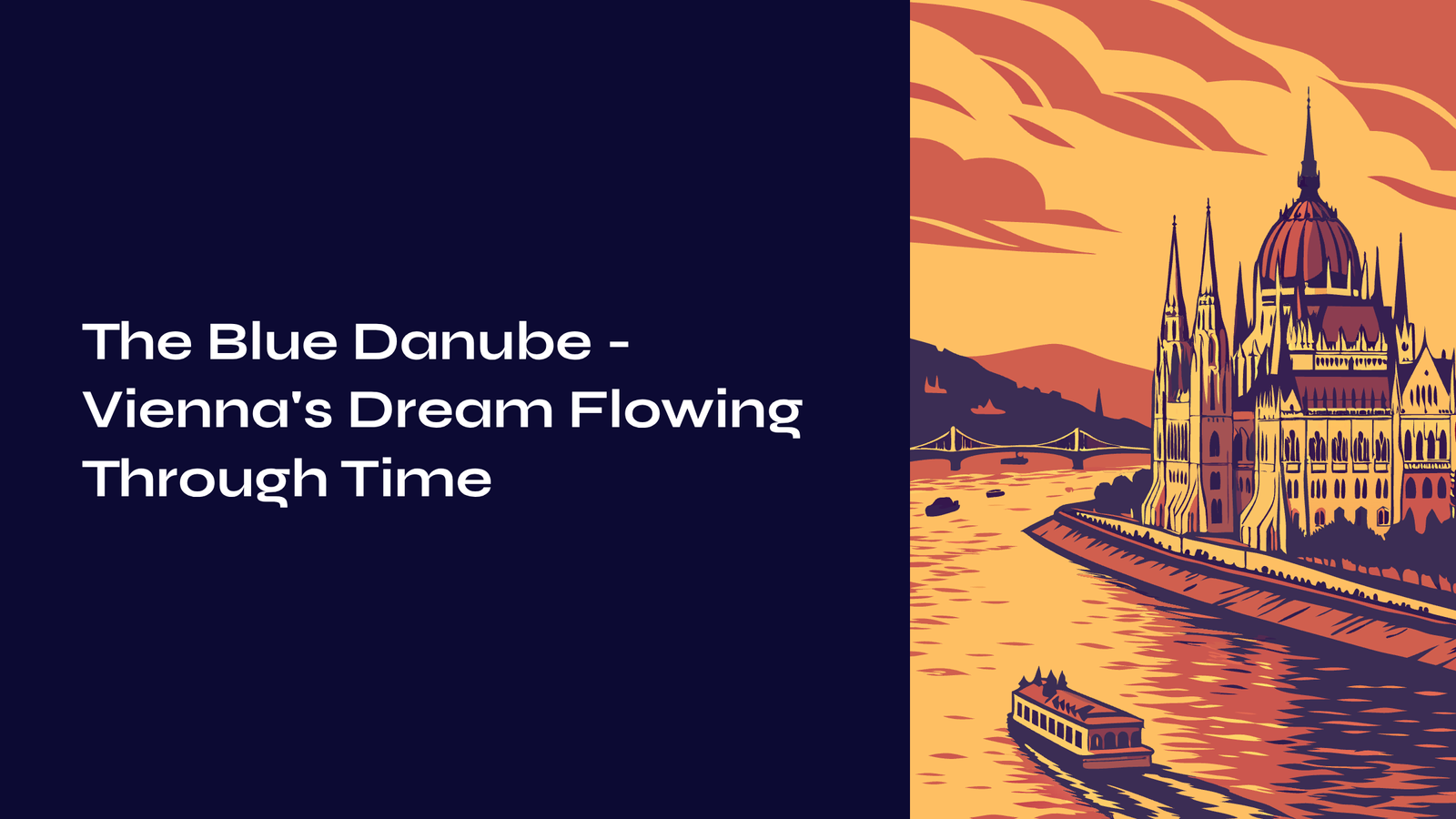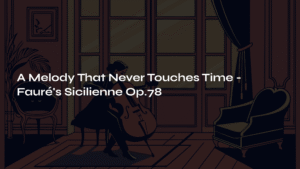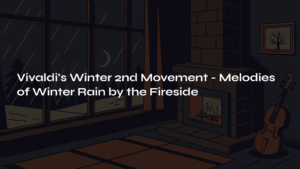Table of Contents

One Winter Night, a Waltz Spoke to Me
On a snow-filled evening, a melody drifting from the radio captivated me entirely. The music unfolding in gentle triple time seemed to transport me back through time to a 19th-century Viennese ballroom. What began as quiet tremors from the strings gradually swelled until the entire world appeared to be dancing to the waltz rhythm.
In that moment, I realized what I was hearing. This was Johann Strauss II’s The Blue Danube—the world’s most famous waltz, Vienna’s unofficial national anthem. Yet few people know that this seemingly perfect masterpiece was initially considered a failure.

An Immortal Melody Born from Despair
A Waltz of Hope Born in War’s Shadow
In 1866, Austria suffered a crushing defeat to Prussia in the Seven Weeks’ War. The economy was in shambles, and the nation’s spirit was shrouded in despair. It was then that Johann Herbeck, conductor of the Vienna Men’s Choral Society, made a request of Strauss II: write a cheerful, patriotic choral piece that could lift the dejected public mood.
Strauss drew inspiration from a poem by Karl Isidor Beck to begin his composition. The verses, each ending with the phrase “By the beautiful blue Danube,” were intriguingly about a Hungarian section of the Danube that didn’t actually flow through Vienna. Moreover, those waters were hardly blue. But sometimes dreams are more beautiful than reality.
The Bitter Failure of the Premiere
The premiere on February 15, 1867, at Vienna’s Diana Hall was a dismal failure. The problem wasn’t the music but the lyrics. Poet Josef Weyl had written satirical words mocking the defeated city and incompetent politicians. The audience was lukewarm, and even the chorus members felt uncomfortable.
A disappointed Strauss confided to a friend: “The devil take the waltz! I only wish the coda might find success.” Who could have imagined that this moment of despair would become the starting point for one of music history’s greatest waltzes?

Miraculous Revival in Paris
Later that same year, a miracle occurred at the Paris Exposition. Strauss stripped away the failed lyrics and reborn the piece as a pure orchestral work. The result was explosive. Parisian audiences were ecstatic, and the music publisher had to rush-manufacture 100 new printing plates to handle orders for over a million piano scores.
From failure to success, from despair to jubilation—the very birth process of The Blue Danube was itself a drama.

Five Waltzes Weaving Sonic Magic
The Mysterious Introduction – A River Awakens
The music begins with quiet tremors in A major. The strings’ tremolo spreads delicately like mist rising from a dawn river. The horns’ distant hint of the waltz theme creates a moment that feels like the sleeping Danube slowly opening its eyes.
Every time I hear this introduction, I envision a Viennese morning. Dawn descends upon a city where the ballroom’s fervor hasn’t yet cooled, and the Danube still flows carrying last night’s dreams.
First Waltz – The Eternally Memorable Melody
The first waltz, beginning in D major, is the face of this work. Here lies that melody everyone has surely heard at least once. The ascending melodic line seems like a dancing couple floating skyward, while the gentle descending passages evoke graceful spins.
This melody’s magic lies in the perfection hidden within simplicity. Without complex harmonies or flashy virtuosity, it possesses an enchanting power to capture the listener’s heart.
Second Through Fifth – A Spectrum of Changing Emotions
The second waltz shifts tonality between its sections, creating different atmospheres. The third waltz becomes more buoyant in bright G major, while the fourth moves from romantic lyricism in F major to transform into a spirited dance. The fifth waltz in B-flat major prepares for the grand finale with rich sonorities.
Each waltz feels like watching different couples dance—some whisper quietly as they move, others spin with vivacity, and still others glide with elegance.
Coda – When All Dreams Converge
The final coda is this work’s crowning glory. Themes from the first, second, and fourth waltzes are sequentially reprised, like showing highlights from the ballroom. The explosive, magnificent conclusion that follows evokes all the ballroom’s dancers cheering and dancing in unison.

The Waltz’s Lasting Imprint on My Heart
Listening to this music always feels like time travel. Sometimes I feel transported to a 19th-century Viennese ballroom, other times I’m watching the rotating space station in Stanley Kubrick’s 2001: A Space Odyssey. It’s no coincidence that this waltz became a universal language spanning from Earth to space.
I can never forget that moment when this piece resounds at the New Year’s Concert. As the introduction begins, accompanied by the audience’s gentle applause and the conductor’s traditional “Prosit Neujahr!” greeting, it becomes a magical experience where music transcends mere art to become part of life itself.

Three Keys for Deeper Listening
First – Notice Vienna’s Unique “Schleppen” Technique
There’s something special that can only be heard in the Vienna Philharmonic’s performances: the subtle anticipation of the second beat called “Schleppen.” This rejects mechanical precision and breathes human soul into the music—Vienna’s secret. It’s like dancers naturally moving while matching each other’s breathing.
Second – Listen for Each Waltz’s Individual Character
The five waltzes each possess distinct personalities. The first is graceful and lyrical, while the fourth is spirited and buoyant. Listening with awareness of these contrasts reveals how meticulously Strauss designed this work.
Third – Trust in the Value of Repeated Listening
This music reveals new facets with each hearing. Initially, you focus on the melody, but repeated listening brings out the harp’s delicate arpeggios, woodwind dialogues, and the brass section’s brilliant colors. Like fine wine revealing deeper flavors over time.

Music’s Power to Transcend Time
The Blue Danube has long transcended simple dance music. This piece embodies a journey from failure to success, despair to hope, and continues to awaken us to life’s beauty more than 150 years later.
The fact that music by a composer who rose from the wounds of defeat now resonates even in space stations proves that music is a language transcending time and space. Perhaps the “beautiful blue Danube” that Strauss dreamed of was not an earthly river, but an eternal melody flowing through the human heart.
Like that waltz flowing from the radio on a snowy winter night, this music always speaks to us. In those moments when time seems suspended, we finally understand: music is humanity’s most beautiful means of time travel.

Next Destination: Into Winter’s Silence
Leaving behind The Blue Danube’s magnificent ballroom, let us prepare to journey to an entirely different world. Vivaldi’s “Winter” Second Movement Largo from The Four Seasons possesses a charm completely opposite to the waltz’s splendor.
If Strauss’s waltz is a brilliant dance beneath golden chandeliers, then Vivaldi’s Winter Largo is a meditative moment quietly watching snow fall outside by the fireplace. The violin’s warm melody seems to sing of peaceful emotions rising from winter evening’s tranquility.
This quiet, lyrical movement contrasts with winter’s cold, harsh winds by depicting indoor coziness and inner serenity. Unfolding in just 3-4 minutes, this music demonstrates that sometimes the deepest emotions arise from the quietest moments.
From brilliant waltz to silent winter, music’s journey continues thus.



